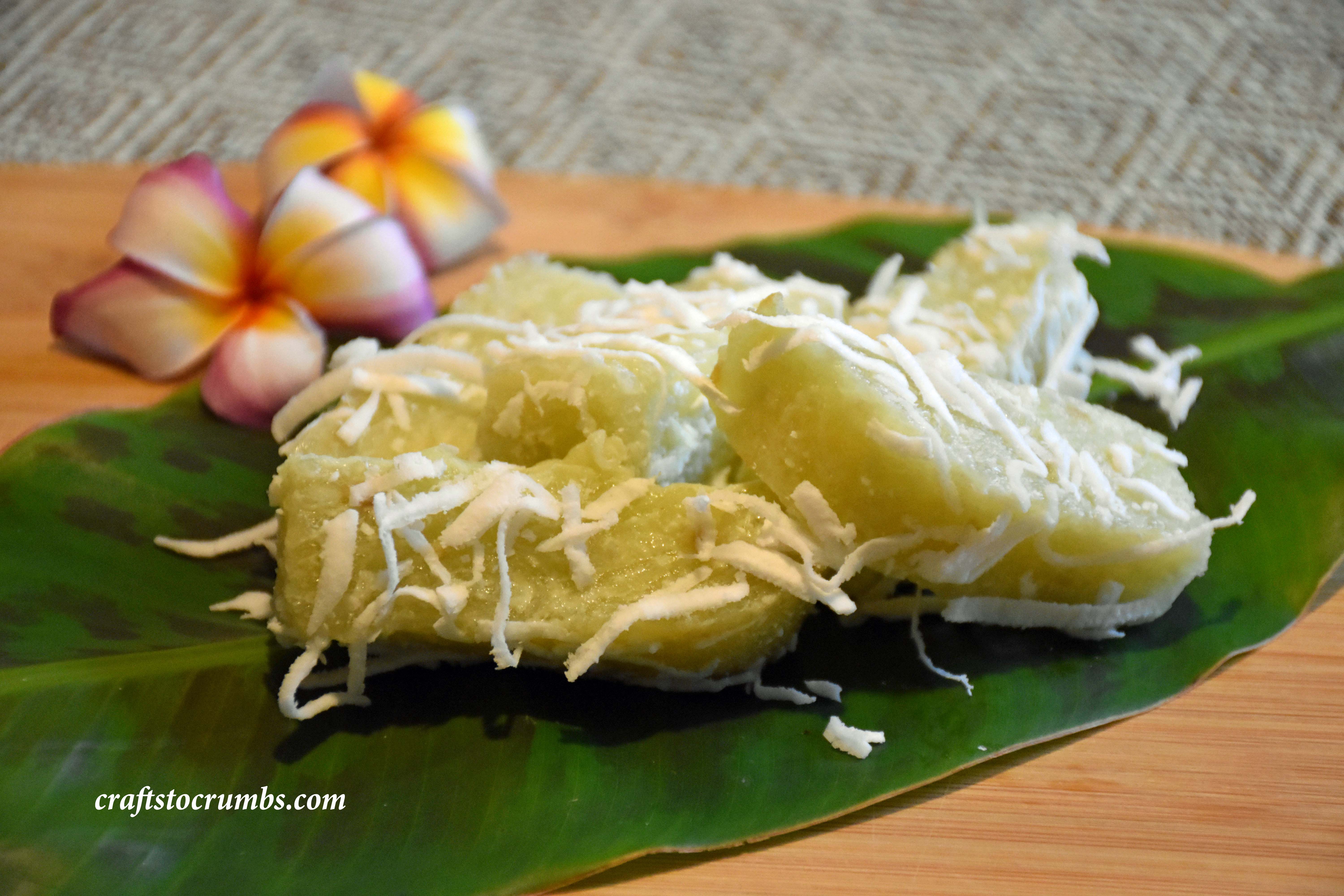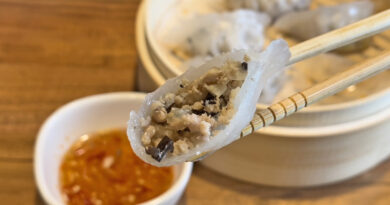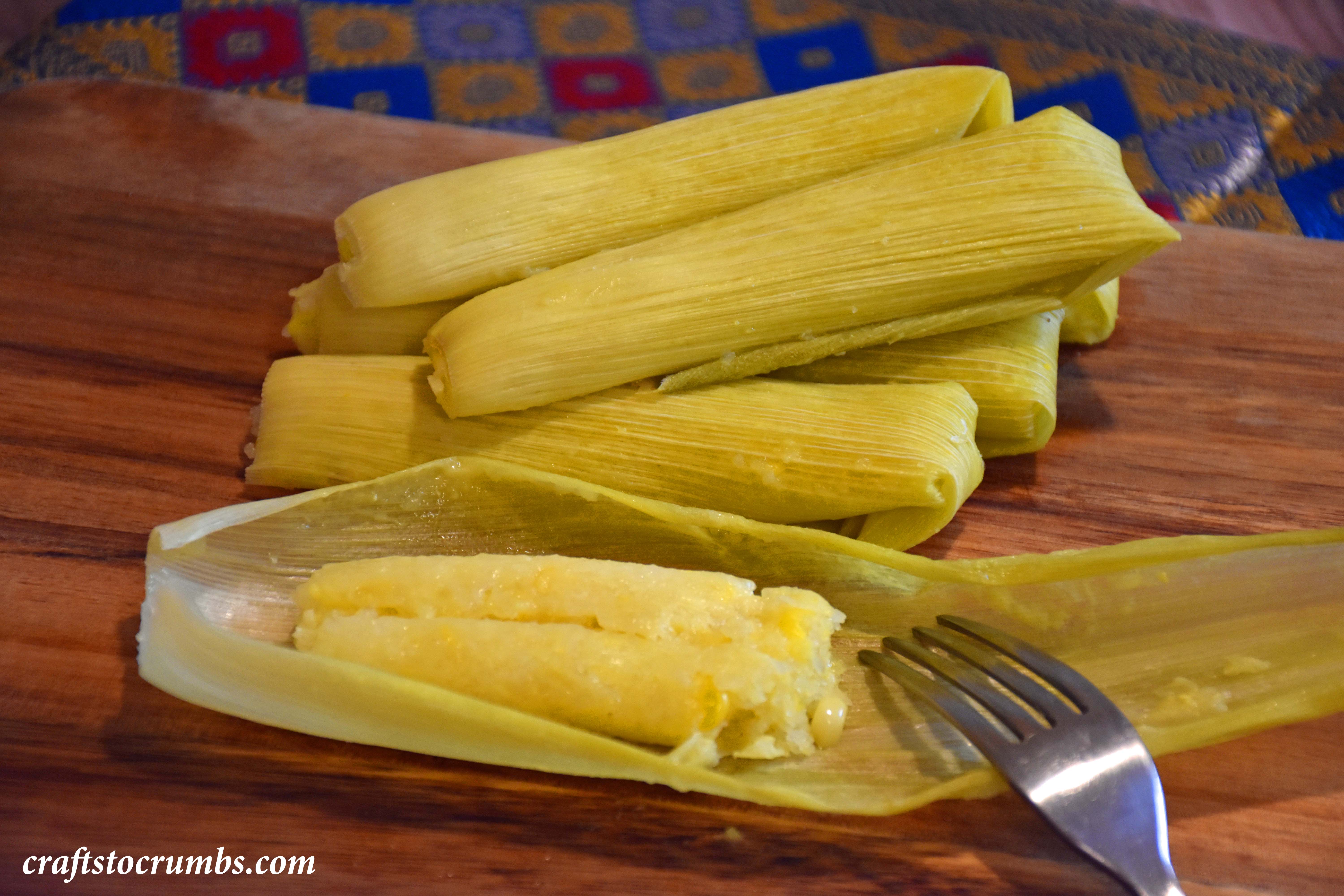Baked Cassava Cake
This is a baked version of the steamed cassava cake that I grew up on. I’m not sure why, but for the past year or so, I had been on a mission to find a baked alternative. It’s not like the steamed version is harder or takes any longer. But perhaps in my mind a baked version would probably yield better texture. Well, it took many attempts over the past year before my recipe got to this point. Getting a perfectly moist cake without added steam can be trickier than you think.
In between the latest two attempts of my baked cassava cakes, my sister had made the steamed version, so I had the opportunity to dissect that cake…literally. Then I tweaked and made the cake using the recipe below. I was very pleasantly surprised with the result considering my past results. The twisting of the cake on the video to show the texture was after I had left it in the fridge to speed up the cooling process. I started working on homework and had forgotten about it. But straight out of the fridge, it was still soft, keeps its shape well and tasted great. I definitely like that it doesn’t feel quite as mushy as the steamed version, but is still soft and pliable. I knew I had a keeper.
Notes:
- Not all cassava/yuca roots are the same size. Don’t stress too much about the size or weight. A 1 lb 1.5 lb root before it’s peel and grated, yields approximately about 2.5 – 3 cups peeled and grated. If you get a little bit more, add a little more liquid, like pandan juice or water to your mixture. Just make sure it is completely covered in liquids.
- There are no tricks to the pandan juice. I literally just blended pandan leaves with water and strained it. My pandan plant died over the winter, so I used frozen ones. No biggie.
- Vanilla is an alternative to the pandan juice. If you would like to use vanilla, you may have to add about 1/3 cup of water into the mixture depending on your root to liquid ratio. If you have plenty of liquids then it may not be needed. I tried one test run with the vanilla and it does make the cake very aromatic, whereas the pandan is much more subtle.
- Cassava or yuca is a tubular root that can be poisonous if not cooked properly. So definitely don’t under cook it. It’s cooked when it’s no longer opaque, but rather more translucent. And it becomes sticky. Yes, it’s sticky when cooked. This is the root used to make tapioca flour and tapioca balls after-all.
Cassava Cake
Prep time: 15 minutes
Bake time: 40-45 minutes
Yields: 12 servings
1 lb – 1.5 lbs cassava (2.5-3 cups grated)
1/3 cup sugar
2 tablespoons tapioca starch
½ teaspoon salt
1 (13.5 oz) can coconut milk
½ teaspoon vanilla extract or 1/3 cup pandan juice
1 cup scraped coconut
Vegetable oil to grease pan
- Preheat oven to 375F and grease pan an 8×8 inch pan with vegetable oil.
- Peel and grate the cassava. Place in a bowl. Add tapioca starch and mix. Then add sugar, salt, coconut milk and pandan juice. Mix well.
- Pour into greased pan. Bake for 40-45 minutes. The cake will soak up all the liquids and be sticky in the center when tested.
- Allow to cool completely.
- Cut into small pieces. Toss with scraped coconut and serve.



